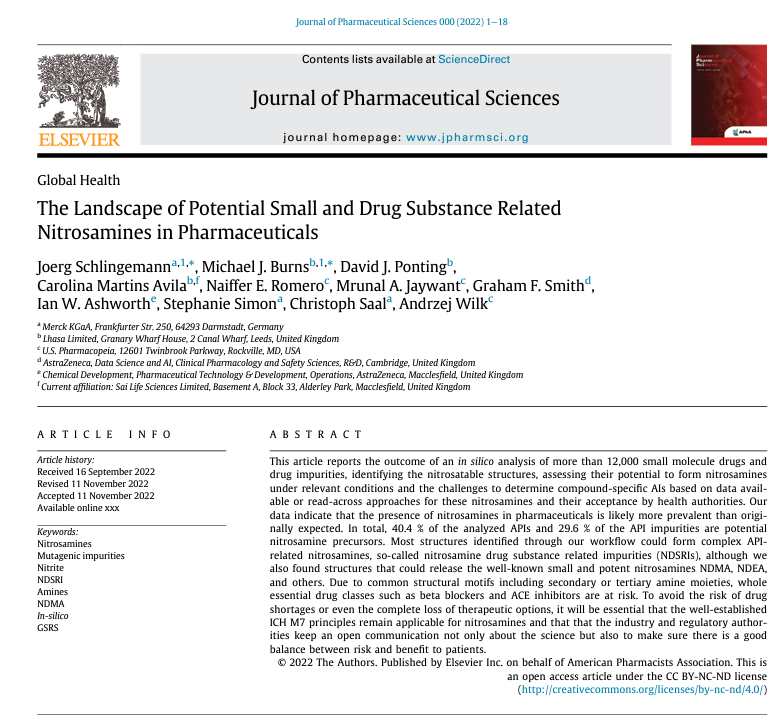“The Landscape of Small and Drug Substance Related Nitrosamines in Pharmaceuticals”.
It is the outcome of a collaboration with scientists from Lhasa Limited, AstraZeneca, and the US Pharmacopoeia. All members of our Nitrosamine Exchange. @schlinjo1975 @MichaelBurns @David @Mrunal @Naiffer_Host
The article reports the outcome of an in silico analysis of more than 12,000 small molecule drugs and drug impurities (USP Structural database), identifying the nitrosatable structures, assessing their potential to form nitrosamines under relevant conditions and the challenges to determine compound-specific AIs based on data available or read-across approaches for these nitrosamines and their acceptance by health authorities. Our data indicate that the presence of nitrosamines in pharmaceuticals is likely more prevalent than originally expected. In total, 40.4 % of the analyzed APIs and 29.6 % of the API impurities are potential nitrosamine precursors. Most structures identified through our workflow could form complex API-related nitrosamines, so-called nitrosamine drug substance-related impurities (NDSRIs), although we also found structures that could release the well-known small and potent nitrosamines NDMA, NDEA, and others. Due to common structural motifs including secondary or tertiary amine moieties, whole essential drug classes such as beta blockers and ACE inhibitors are at risk. To avoid the risk of drug shortages or even the complete loss of therapeutic options, it will be essential that the well-established ICH M7 principles remain applicable for nitrosamines and that the industry and regulatory authorities keep an open communication not only about the science but also to make sure there is a good balance between risk and benefit to patients.
Free access: https://jpharmsci.org/article/S0022-3549(22)00525-1/fulltext

@trust_user_a @Nitrosamines_Analyzer @trust_user_c